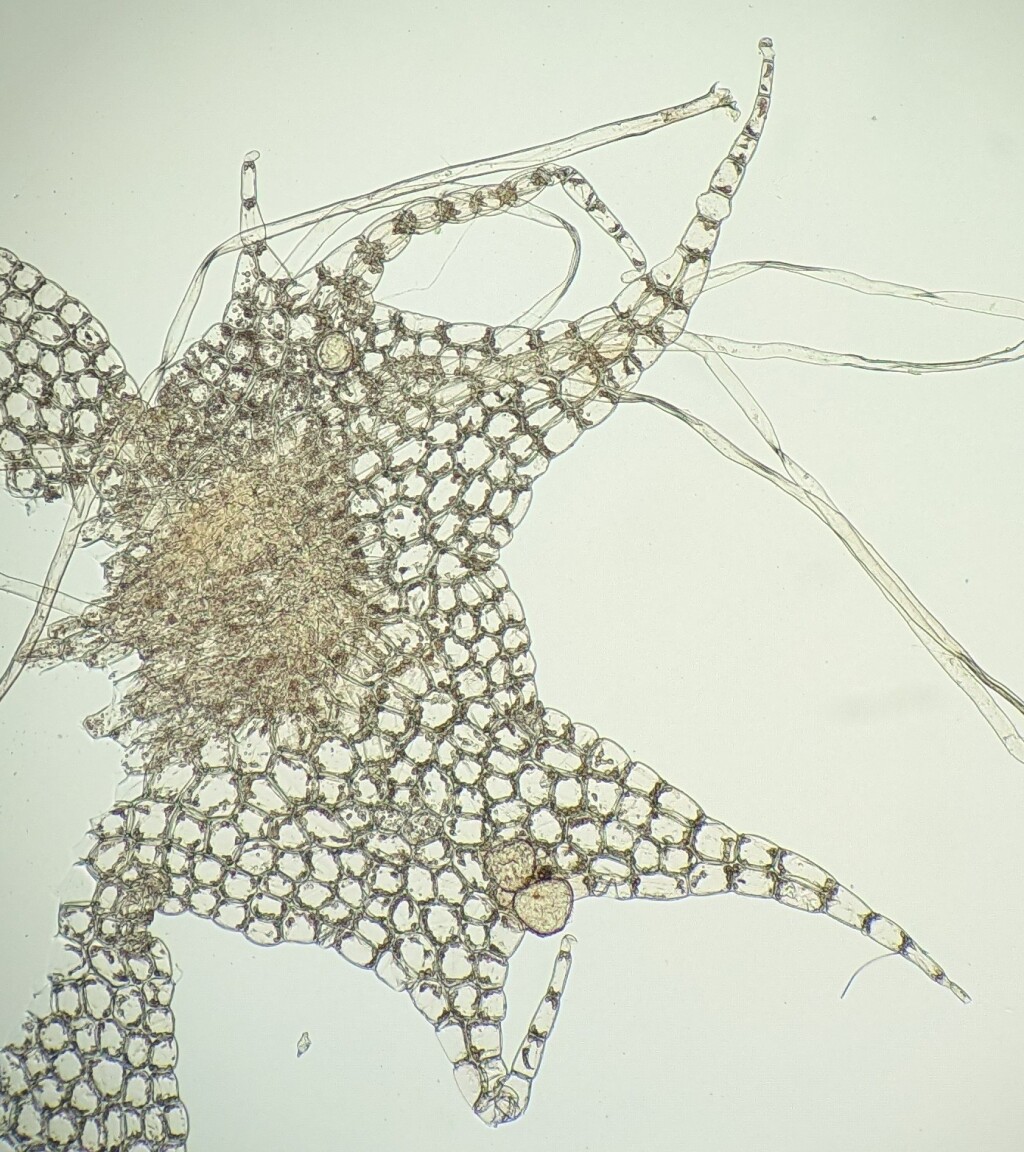Cryptolophocolea
Epiphytic, lithophytic and terrestrial, monoicous or dioicous. Asexual reproduction absent. Stem irregularly branched; branches emerging from main stem near and abaxial to a lateral leaf with the basiscopic half often modified and without a collar of tissue at its base, or emerging from main stem near lateral leaves and with a collar of tissue at base. Lateral leaves ovate or triangular to almost rectangular in outline, mostly asymmetric, bifid, rarely unlobed (not in Victoria) or retuse (not in Victoria), sometimes with smaller teeth in addition to lobes, opposite or nearly so, plane or convex adaxially, with succubous insertion, usually extending to midline of stem adaxially, rarely not and leaving a leaf-free strip of 1– 3 rows of cells between it and leaf on opposite side of stem (not in Victoria), imbricate. Underleaves usually with 2–4 subulate or acuminate lobes, rarely more lobed (not in Victoria) or rarely unlobed to retuse and reniform (not in Victoria), lobes and margins below lobes entire or with small teeth, wider than long, wider than stem, usually broadly attached to both nearest lateral leaves, rarely narrowly connate to one or both (not in Victoria) nearest lateral leaves, distant to imbricate, plane, concave or rarely convex (not in Victoria) when viewed from below. Leaf cells mostly hexagonal or pentagonal, smooth, faintly papillose or with a distinct tubercle (not in Victoria), thin-walled, with or without distinct trigones, with papillose to coarsely botryoidal and globular to ovoid or ellipsoid oil bodies. Androecia on main stem or on branches, with or without vegetative leaves, emerging from main stem near lateral leaves. Perianth terminal on main stem or on short or long branches emerging from lateral leaves, trigonous, obovoid or obloid to urceolate (not in Victoria), forming free bifid or undivided (not in Victoria) lobes at apex with dentate to ciliate margins.
Pantropical genus extending into temperate Australasia and with 29 species (Engel & Glenny 2019); possibly three species in Victoria.
Species of this genus were previously included in Chiloscyphus in subgenus Connati (Engel 2010) but differ from Chiloscyphus by the underleaves that are usually broadly attached to both nearest lateral leaves (Söderström et al. 2013). Cryptolophocolea form a separate lineage to Chiloscyphus in phylogenies based on chloroplast and nuclear DNA sequences, which is most closely related to Chiloscyphus (Patzak et al. 2016), supporting their distinction from Chiloscyphus based on morphology.
Engel, J.J. (2010). Austral Hepaticae 45. A monograph of the genus Chiloscyphus Corda (Lophocoleaceae) for Australasia. Fieldiana Botany 48: 1–209.
Engel, J.J. & Glenny, D. (2019). A Flora of the Liverworts and Hornworts of New Zealand, volume 2. Missouri Botanical Garden Press: St Louis.
Patzak, S.D.F., Renner, M.A.M., Schäfer-Verwimp, A., Feldberg, K., Heslewood, M.M., Peralta, D.F., de Souza, A.M., Schneider, H. & Heinrichs, J. (2016). A phylogeny of Lophocoleaceae-Plagiochilaceae-Brevianthaceae and a revised classification of Plagiochilaceae. Organisms Diversity & Evolution 16: 481–495.
Söderström, L., Crandall-Stotler, B., Stotler, R.E., Váňa, J., Hagborg, A. & Von Konrat, M. (2013). Notes on early land plants today. 36. Generic treatment of Lophocoleaceae (Marchantiophyta). Phytotaxa 97: 36–43.
 Spinning
Spinning